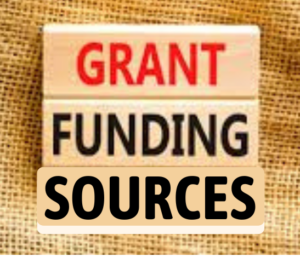
If you are performing grant-funded research within the US, you’ve likely experienced a number of highs and lows related to federal research funding trends. Many federal grant programs fall under Congressional budget appropriations and thus are subject to delays, uncertainty, and yes, even cuts depending on when a new budget law is passed and what funds are set aside for research endeavors.
Even when budget cuts are enacted, they aren’t necessarily ubiquitous or evenly distributed. Sometimes funds to award new grants are lower than anticipated, or only certain types of awards face reductions, or just a select few programs get axed. As a rule of thumb, though, we advise all investigators to expect that they’ll feel the consequences of federal spending changes at some point in their careers, reflected as greater difficulty in obtaining funding or securing the requested budget amount. This isn’t a scare tactic; rather, this perspective can foster a strategic approach that makes a research program (especially its people and projects) more resilient to changes in funding levels.
That old adage, “Don’t put all of your eggs in one basket” is a great rule of thumb for funding a research program. Running your research on one source of funding is sometimes the only option, but it’s not typically* the most resilient. [*Some single sources of funding are pretty safe (e.g., HHMI investigator funding), but as they are available to relatively few investigators, we’re not going to go into detail on these.] Pulling together multiple sources of funding—different federal agencies, foundations, philanthropies, private companies—makes for a diverse portfolio that 1) can advance several lines of research inquiry that might spin off future projects and awards and 2) is more resilient to spending cuts from one source.

Is there an ideal scenario for when and how to diversify your research funding? Not really. Each investigator’s funding pursuits should reflect their unique program and goals. Those who wish to keep a relatively small research program focused on just a couple or few closely related projects and with few research, personnel will have different needs than those who want a large team advancing multiple distinct and/or large-scale projects. Across this spectrum, seeking awards with differing dollar amounts, lengths, and expectations, and—if at all in your control—ending at different times will add buffers. Don’t forget that contracts (which differ from grants because there are expected deliverables) provide another option to widen the breadth of your research funding.
Here are some practical suggestions to consider.
Strategies for Diversifying Your Research Funding Portfolio
1. Identify and Pursue Varied Funding Sources:

-
- Federal Agencies: In the US, federal research grants and contracts are available from sources such as NIH, NSF, DOD, USDA, CDC, DOJ, EPA, etc. Try not to have tunnel vision—more than one agency can be right for you and/or your work.
- Foundations and Non-Profits: Many organizations put dollars into advancing research and investigators, and their application and reporting requirements can be substantially less burdensome compared to federal awards.
- Industry and Private Companies: Collaborations with private sector companies can provide funding, resources, and applied research opportunities.
- International Funding: Explore opportunities from international organizations and governments, which can broaden the scope and impact of your research.
2. Lean on Your Networks and Resources:
-
- Build strong collaborations: Consider interdisciplinary teams and partner with researchers from different fields to develop multifaceted projects that appeal to a broader range of funding agencies.
- Find out where others get support: Ask colleagues and collaborators about their funding streams to see if there are opportunities you might be overlooking.
- Institutional Support: Leverage your institution’s resources for seed funding, matching grants, and administrative support to strengthen your proposals. Check with your development office about fundraising and donor events that might connect you with other funders.
3. Develop a Funding Timeline:
-
- Staggered Applications: Submit grant applications with staggered timelines to ensure continuous funding and avoid periods of financial drought. One word of caution, however: plan and strategize so that you don’t inadvertently find yourself in a cycle of always preparing grant applications (and therefore having little time for your other responsibilities).
- Short-Term vs. Long-Term Grants: Balance short-term (1-2 years) and long-term (3-5 years or more) funding opportunities to maintain flexibility and sustainability.
4. Leverage Smaller Grants and Awards:
-
- Pilot Grants: Use smaller grants to conduct preliminary studies that can strengthen the foundation of larger grant applications.
- Travel and Conference Grants: Apply for funding to attend conferences, which can facilitate networking and collaborative opportunities.
By diversifying your research funding sources and implementing strategic planning, you can safeguard your research program against economic uncertainties. This proactive approach not only ensures the sustainability of your projects but also enhances your ability to explore new research avenues and achieve long-term success.
